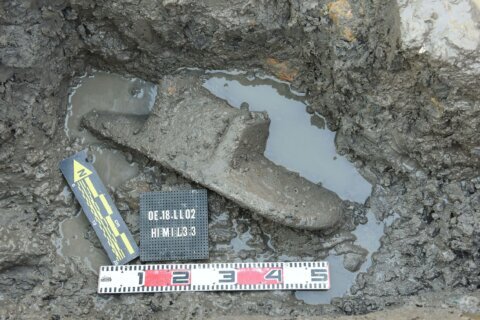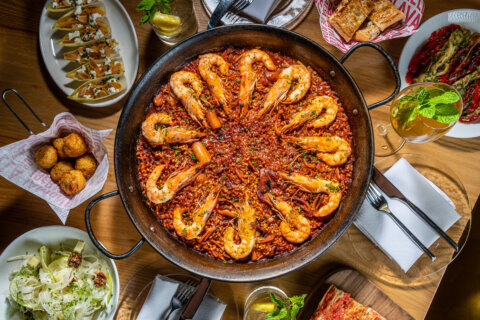
(CNN) — Traces of spices detected on a grinding slab and other stone tools unearthed in Vietnam reveal that curry was eaten in the region at least 2,000 years ago — and what was in the dish.
The sandstone slab, buried 2 meters (6.5 feet) below the surface, was dug up in 2018 at the Oc Eo archaeological complex in southern Vietnam. The site was once an overseas trading hub of an ancient Southeast Asian kingdom known as Funan, according to a new study of the substances found on the slab.
“Preparing curry involves not only a diverse range of spices but also the use of grinding tools, considerable time, and human effort,” said study author Dr. Hsiao-chun Hung, a senior research fellow in the department of archaeology and natural history at Australian National University in Canberra.
“Remarkably, even individuals residing outside of India nearly 2,000 years ago expressed a strong desire to savor the flavors of curry, as evidenced by their diligent preparations,” Hung said.
Hung and a team of researchers analyzed microscopic remains known as starch grains — tiny structures found within plant cells that can be preserved over long periods — that they found on the grinding and pounding tools. Their analysis revealed several culinary spices that originated in different places around the world: turmeric, ginger, fingerroot, sand ginger, galangal, clove, nutmeg and cinnamon.
The findings offer clues to how curry — and the people who made it — migrated to Southeast Asia.
Analyzing ancient curry
The ingredients the researchers identified are similar to those in curries eaten in Vietnam and other places in Southeast Asia today.
“Nowadays, preparing curry in Vietnam has become much simpler for most families due to the widespread availability of curry powder in supermarkets. However, it is interesting to note that the curry recipe used today has not deviated significantly from the ancient Oc Eo period,” said study coauthor Dr. Khanh Trung Kien Nguyen, an archaeologist at the Center for Archaeology, Southern Institute of Social Sciences in Ho Chi Minh City, Vietnam.
Nguyen added that the team planned to recreate the 2,000-year-old curry based on the ingredients found at the site.
People were likely enjoying curry in India about 4,000 years ago, as evidenced by traces of turmeric, ginger, eggplant and mango found in cooking pots and dental plaque, the study noted, but this recent finding reveals that the production of curry has a long and fascinating history beyond India as well, Hung said.
Some of the ingredients recovered from Oc Eo, such as turmeric, are similar to those found in Indian curries, while other components are more distinctively Southeast Asian, including coconut milk and galangal, a spice commonly found in curry pastes in that region but seldom used in Indian curry.
How curry linked cultures
Hung said that it’s not clear exactly who made curry at the site, but they likely were migrants from India or local inhabitants in Vietnam influenced by South Asian culture. The large grinding stone — 76 centimeters (30 inches) long and 31 centimeters (12 inches) wide — was found with the remains of stilt houses, which would have stood either along or above water.
DNA from a cemetery in Cambodia linked to Oc Eo by an ancient canal system had previously revealed population movement from South Asia into Southeast Asia from the first to third centuries, Hung said.
The new study concluded that curry recipes arrived in Southeast Asia with South Asian traders and migrants as contact between the regions increased during the early centuries of the first millennium, and it showed how the global spice trade has linked cultures and economic systems.
Most surprising, Hung said, was that some of the nutmeg seeds unearthed during the dig still released a unique aroma.
“Food culture is significant in human history,” Hung added. “When we enjoy delicious food, we often wonder about how its flavors were formed, the origins of the recipes, and when these culinary methods were first practiced.”
The research published in the journal Science Advances on Friday.
The-CNN-Wire
™ & © 2023 Cable News Network, Inc., a Warner Bros. Discovery Company. All rights reserved.








